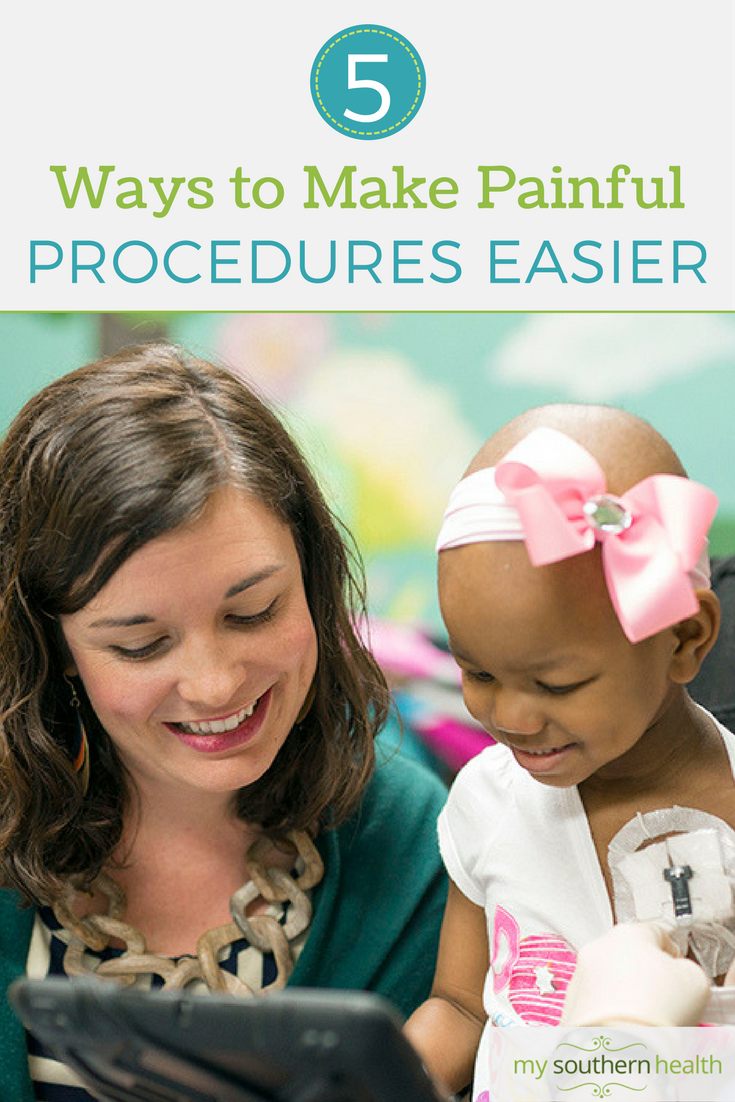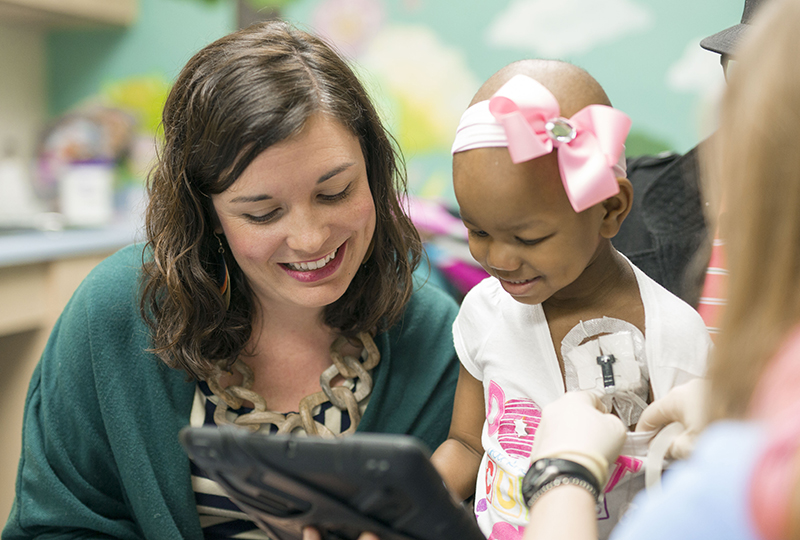IVs, blood draws and injections can be scary for a child, but these tips can help make it easier.
“I can’t do it!” she exclaimed.
I reassured her that we would help her get through it, then offered an opportunity to see pictures of another child getting an IV. She watched as I explained each step of the procedure: “First, the nurses look with their eyes. Then, they clean to make sure there are no germs. Then 1, 2, 3 — the nurse will use a tiny needle to put the straw in your arm to give you medicine.” Her eyes widened and she said, “I can’t do it!” once more.
As a child life specialist, I hear this and similar exclamations several times a week. Sometimes the needle is the scariest part and other times, it’s the tight rubber band or fear of the unknown that is scariest.
I always take a moment to validate the concern, give the opportunity for education, and then provide ways to cope with the procedure. In this scenario, I said, “I know you can do this, I want you to hold my hand and take big, deep breaths like you’re getting ready to blow out your birthday candles, and the nurse will slip the IV into your arm. Let’s work together, we can do this!”
She sat in her mom’s lap, breathed with me, and blew out those imaginary candles just as the needle was inserted. Afterward she said, “I did it!” with a huge smile.
Painful procedures are not fun for anyone. For children, they are even worse. Below are five ways to make painful procedures such as getting an IV, blood draw or injection a little bit easier for your child:
Prepare
If you know about a procedure ahead of time, try using age-appropriate language to describe each step. Include sensory information like “tight rubber band; cold, wet soap; and small poke.” “First-then” statements are helpful. Acting it out with a stuffed animal or doll can help children gain control of the procedure before they are faced with it firsthand. The older the child, the more information he or she may need regarding the steps and need for the procedure.
Give choices
Give your child choices whenever possible. Make sure the choices are actually options. For instance: Asking “Do you want to get an IV now?” will likely result in a “no.” So instead, you could say “Would you like to sit in Mommy or Daddy’s lap for the IV?”
“Do you want us to count 1, 2, 3 before?”
Validate
Validating fear, pain and emotions is a huge part of helping children feel they can express themselves and work toward conquering the fear or coping with the pain.
Words that can help include:
“That seemed really hard for you.”
“Let’s work together to get through this tough procedure.”
“It is okay to _____ (cry, be scared, yell for a moment) if you need to.”
“I can tell that was hard for you. What do you think will make it easier next time?”
Introduce coping tools by giving them a ‘job’
Giving children a job during the procedure such as holding still or taking big breaths can help with both pain management and ease of procedure. Another thing your child can do is squeeze someone’s hand or blow bubbles (real or pretend!).
“Let’s take big breaths together.”
“Squeeze my hand as hard as you can!”
Giving your child something to concentrate on can also be helpful, if he wants to concentrate on it. Be careful not to distract your child if he truly wants to participate in the procedure by counting, watching and breathing. Helpful alternative focus items include bubbles, iSpy books or iPad games.
Comfort positioning
Most children feel most comfortable near their caregivers, so ask the staff how you can be close to your child either by having him or her sit in your lap, hug you or have you sit beside him or her. Often this allows you to be the one who “hugs” them to “keep them safe” during the procedure and lessens the stress of being held safely by staff.
I hope this information will help the next time you are inevitably asked, “Am I getting a shot?” to feel confident you can both get through the procedure with courage and confidence. Just remember to breathe.
Katie Beard is a certified child life specialist with Monroe Carell Jr. Children’s Hospital at Vanderbilt‘s outpatient Hematology/Oncology clinic. She enjoys baking, writing and spending time with her nieces and nephew. Katie learned of the career of child life during her undergraduate studies at The University of Alabama and believes the field is an important part of hospital care.


No appointment necessary
Locate a Vanderbilt Children’s After-Hours clinic near you.




